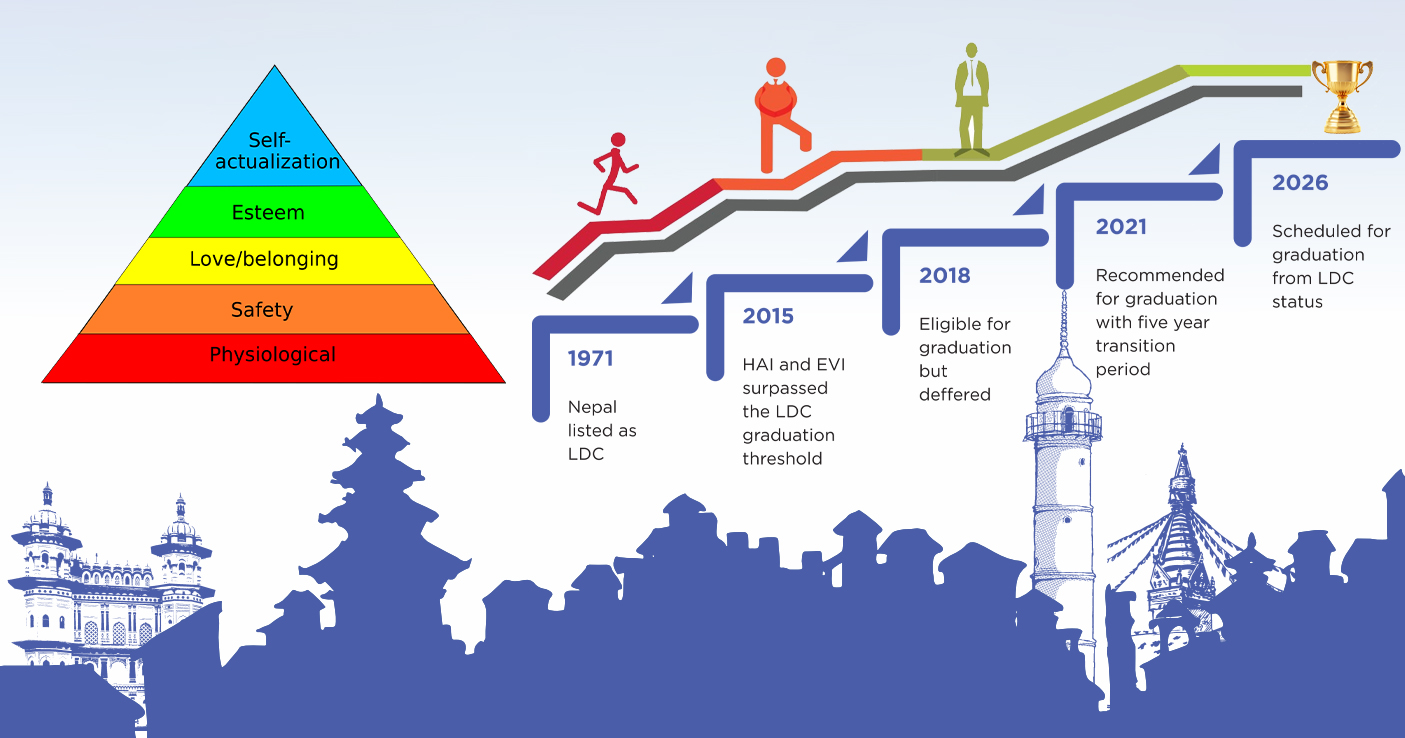Kathmandu: Nepal is set to graduate from the United Nations’ list of Least Developed Countries (LDCs) by November 2026, marking a significant milestone in its economic development journey.
After nearly 55 years of being categorized as an LDC, Nepal will officially transition to a developing country status.
This shift follows the successful fulfillment of three key criteria: improvement in the Human Assets Index, Economic and Environmental Vulnerability Index, and Gross National Income (GNI) per capita.
Government officials view this graduation as a positive step, suggesting it symbolizes national economic progress and strengthens Nepal’s global credibility. It also reflects improvements in living standards, resilience to environmental shocks, and increased income levels.
Despite potential reductions in international grants and trade preferences, officials argue that the benefits—such as improved credit ratings and increased foreign investment—will outweigh the losses.
Nepal had already qualified for graduation earlier but requested a five-year preparatory period during the UN’s 2021 review. This timeline ends in 2026, aligning Nepal with other graduating nations like Bangladesh and Laos, which are also scheduled to leave the LDC category that year.
According to the Ministry of Finance, Nepal’s per capita income has grown from US$ 1,335 to US$ 1,496 in just three years. The World Bank considers any country with per capita income above US$ 1,361 as eligible for low middle-income status.
As a result of this economic rise, the terms of international concessional loans are also changing. For instance, the World Bank’s concessional loan interest rate has already doubled from 0.75 percent to 1.5 percent, and JICA’s loans, currently at 0.1 percent, will rise to 2 percent by 2026.
Currently, Nepal enjoys average interest rates of less than 2 percent on loans from various donor agencies. However, with the graduation, such favourable terms may diminish, raising concerns among development stakeholders.
These include the potential end of special duty-free trade privileges and a slight decrease in exports—estimated to drop by 4 percent—as forecasted by the International Trade Centre (ITC).
Wednesday’s National Assembly session also saw discussions about the implications of LDC graduation. Lawmakers emphasized the need for the government to prepare by addressing challenges and crafting policies that support sustainable development post-graduation.
They argued that this change would boost Nepal’s reputation, self-reliance, and investment appeal, and have little impact on grant inflows due to Nepal’s improved repayment capacity.
Prime Minister KP Sharma Oli, speaking in the Assembly, echoed this optimism. He stated that the graduation is the result of Nepal’s long-standing efforts and should be viewed as an opportunity, not a setback.
“Fifty-five years after being listed as an LDC by the UN General Assembly in November 1971, Nepal is now ready to step forward as a developing nation,” Oli said.
However, concerns remain. Development grants and trade benefits that LDCs typically enjoy—such as zero-tariff access for exports—may be withdrawn. Nepal may also lose privileges offered by the World Trade Organization (WTO) and other global institutions.
Yet, Finance Ministry officials argue that relying on aid is not sustainable and that Nepal must shift toward result-oriented, loan-funded development projects.
While there is anxiety over potential grant cuts, the broader outlook remains positive. Nepal’s indicators have strengthened significantly, creating a promising foundation for its future as a developing nation. With necessary legal reforms underway, the government is hopeful that this transition will be both sustainable and beneficial.



Comment Here